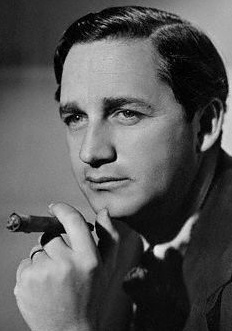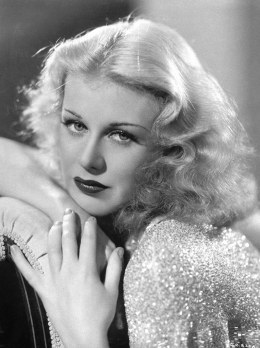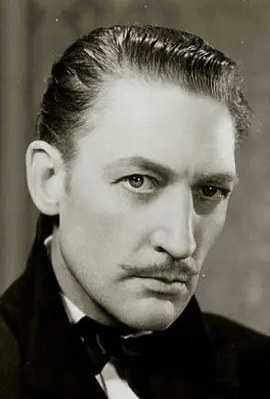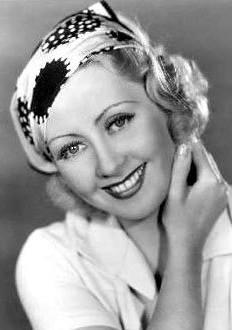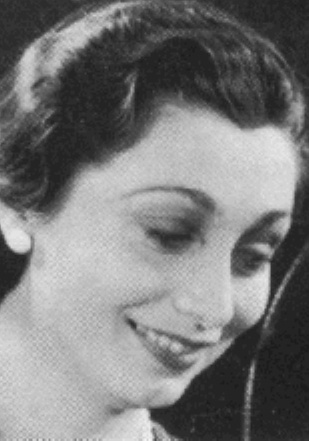1933年淘金女郎 Gold Diggers of 1933(1933)
简介:
- 该片讲述了百老汇一场表演前后发生的种种故事。
演员:
影评:
- (大学时期的paper,以下内容全部原创,转载请联系本人)
经济大萧条是我很迷恋的一个历史时期。它不仅是film noir在美国得以出现、昌盛的条件,还有其余很多类别都在这个背景下繁荣。比如辉煌一时的backstage musicals。虽然我不是特别喜欢歌舞片,但backstage musicals和大萧条真是写research paper时一个立刻想到的话题。以下是这个10月的劳动成果:)
Between 1929 and 1932, although not driven to bankruptcy, the major studios of Hollywood were severely affected by the Great Depression. In three years, movie attendance had dropped from 110 million admissions per week to 50 million (Furia and Patterson 66). However, the 1930s saw the flourishing of a specific film genre, the backstage musical. Beginning with The Broadway Melody (Harry Beaumont 1929) which was both an Oscar and box office winner, the backstage musical reached its peak with a succession of Warner Brothers’ productions in 1933: 42nd Street (Lloyd Bacon 1933), Gold Diggers of 1933 (Mervyn LeRoy 1933) and Footlight Parade (Mervyn LeRoy 1933), all choreographed by Busby Berkeley. This paper investigates the reasons behind Warner Brothers’ success from two perspectives. In terms of their content and form, these musicals especially appealed to the entertainment-hungry and low-spirited audience in the Depression era. In terms of the production and promotion, the studio system and Warner Brothers’ alignment with the Roosevelt administration were favorable to these musicals’ success. Backstage musicals provided the American public with abundant spectacles in tough times, and they also left an aesthetic heritage in the cinematic history.
Backstage musicals present the backstage stories of putting on a show. In contrast to integrated musicals, their musical numbers are often separated from the narrative,appeared as rehearsals. As the off-stage stories progress toward a happy ending, the musical numbers also turn to a successful stage performance at the end, put up by the collective effort of the crew. A closer examination below of the content and the form of Warner Brothers’ backstage musicals shows how Warner Brothers supplied the Depression-era audience with what they hoped to see on screen. They did so by providing the audience a mixture of escapism and realism.
On one hand, Warner Brothers’ backstage musicals as a form of entertainment served the function of entertaining the audience, and in the context of the Great Depression, they tried to fulfil the public need for escapism. In his essay “Entertainment and Utopia”, Richard Dyer identifies two important features of entertainment: “escape” and “wish-fulfilment”. He states that entertainment provides the means by which alternatives and hopes can be imagined (20). It is reasonable to assume that the Depression-era audience especially sought from films elements of romance, comedy and a happy ending, to give them a moment’s escape from the gloomy reality. Furthermore, these backstage musicals gave an affirmation to the traditional American beliefs: “that hard work would pay off, that individuals were in charge of their own destiny, and that simple good neighborliness would see America through the crisis” (Canning 51). The crews are often caught in an economic predicament, and the whole film depicts their efforts to put on a successful show to overcome the obstacles. After watching the film, the audience felt emotionally uplifted as they came out of the theatre.
On the other hand, Warner Brothers did not merely make backstage musicals escapism entertainment, but they also made certain social commentaries through the setting and the plot. Compared to many films at the same time which “completely avoided the reality of what was happening in the rest of the country” (Kobal 90), Warner Brothers’ backstage musicals were highly socially conscious. In fact, the setting of these films was the Great Depression itself, in which producers, writers and showgirls faced poverty and unemployment, arousing much resonance with the audience. Many of the musical numbers directly used the Great Depression as their motif. For example, the opening of Gold Diggers of 1933 is an ironic spectacle “We’re in the Money”. The rehearsal is then interrupted by creditors who come to seize the costumes and close down the show because of the producer’s outstanding debts. The ending of Gold Diggers of 1933, “Remember My Forgotten Man”, provides an even stronger social critique of the aftermath of World War I. The musical number shows soldiers marching off to the war and also depicts the unemployment, poverty and broken families in the aftermath. The number is inspired by the Bonus March event in 1932, when 15,000 unemployed veterans paraded in Washington D.C. to demand for money and job (Rubin 73).
In addition, a key figure in the success of these backstage musicals was Busby Berkeley, the choreographer for Warner Brothers’ musical numbers. His distinctive kaleidoscopic spectacles completely won over the Depression-era audience. When Footlight Parade was premiered, Daily Boston Globe acclaimed that “no more lavish, impressive and spectacular musical talkie has ever been made” (Hallett 11). Los Angeles Times said that “the audience at the premiere at Warner Brothers Hollywood Theatre was under a spell” (Schallert A9). Busby Berkeley fully took advantage of the mobile camera to show the performances from multiple angles. The camera could pan and tilt; it could zoom to a close-up of the dancer; it could shoot overhead to present geometric patterns formed by dancers; and it could even track through a line of dancers’ legs. The audience gained a completely new experience which they could not enjoy even if they were sitting in the best seats watching a live musical. As Gene Kelly described it, Busby Berkeley numbers were not dance numbers, but cinematic numbers (Pike 11).
Turning to the production side of these backstage musicals, the studio system, which had already been in place by the time, allowed for the thriving of this specific genre. The studio produced films in the same way well-run factories manufactured products. Films were manufactured on a regular basis through the production chain. The studios took advantage of specialized labor to maximize efficiency and profits. Musicals especially suited this mode of production, as studios gathered various talents (directors, choreographers, songwriters, screenwriters, etc.) to form a repertoire. They worked in their specialized departments and collaborated to develop a complete musical. Because of the formulaic production and the consistency of labor, musicals from a studio usually carried their own trademarks. Steven Cohan stresses the importance of “standardization” in the introduction of his book Hollywood Musicals, The Film Reader: “Individual artists could aim high but as far as studios were concerned the musical remained an industrial product, its value assured through its standardization, and numbers served this aim” (11). He points out when promoting a musical, the trailer mostly focused on the musical numbers. By showing a musical star and lavish spectacles, the studio sent the message that the upcoming musical contained the same elements as its previous hits yet surpassed them (11). Therefore standardizing and trademarking its musicals helped Warner Brothers build a stable audience.
One thing special about Warner Brothers was that unlike other majors, the company was a family-run business, which contributed to its exploitation of the studio system to extreme during the Great Depression. The Depression intensified production control and made Warner Brothers “virtually a self-contained world with each department doing its individual part for the collective goods” (Hoover 145). In 1932, Warner Brothers had an average production cost of $200,000 per feature, which was the second lowest of the major. MGM, for example, had an average of $450,000 ((Hoover 146). The statistics provided evidence that Warner Brothers indeed organized its production economically and efficiently.
Just as musicals played an important role in the film’s transition to sound, the development of sound technology was surly an essential condition for turning out these musical spectacles. Warner Brothers was a pioneer in the industry’s conversion to sound, and it had maintained its emphasis on technology as a crucial factor of making good movies. In the early 1930s, Warner Brothers and most of the other studios changed from making sound-on-disc films to sound-on-film films. Sound-on-film technology made more flexible filming available, and also opened up many possibilities for recording, and postproduction editing of these musicals
At last, Warner Brothers in the Depression era was identified as a firm supporter of the Roosevelt administration and the New Deal, and it did exploit this relationship when promoting films. There is much evidence suggesting Warner Brothers’ alignment with the Roosevelt administration. Some lies in these backstage musicals themselves. Warner Brothers made films about working-class people, and upheld the idea that collectivist spirit pulled people through crises, which resonated with the New Deal’s ideology of collectivism. Warner Brothers’ backstage musicals also made direct references to the Roosevelt administration. An example would be the ending number of Footlight Parade, where a marching chorus revealed a huge portrait of Roosevelt. Apart from their work, Warner Brothers’ engagement in public political events also demonstrated them as advocate of the Roosevelt administration. For example, during the election period, they held a large rally in Hollywood bowl, where celebrities in the film industry attended and people participated in a parade to support Roosevelt’s candidacy (Robbins 122).
Warner Brothers’ advocacy of the Roosevelt administration was reflected in their promotions. As A.S. Robbins puts it, Warner Brothers were “eager to capitalize on Roosevelt’s popularity and associate his charisma with Warner Bros. films” (Robbins 123). The advertising of 42nd Street provides an example of how Warner Brothers “capitalize on Roosevelt’s popularity”. In one poster, Warner Brothers put “Warner Brothers welcome Franklin D. Roosevelt and John Nance Garner” on the top, followed by the portraits of the president and the vice president. They also put “celebrating inaugural week” and “New Deal entertainment” together in a circle in this poster to send the message that the upcoming Warner Brothers’ musical was just as promising as the new administration. Another example is the appearance of the Blue Eagle in Footlight Parade, which was a symbol of National Recovery Administration. At that time, it was a common phenomenon that companies in other industries displayed the Blue Eagle on their products and consumers were encouraged to buy from these companies. Warner Brothers were in a sense also marking their products with the Blue Eagle in the same way these companies did.
In conclusion, Warner Brothers’ backstage musicals are a distinct product of the Great Depression. They were able to attract a huge number of audience because they offered them a mixture of escapism and realism. Warner Brothers took full advantage of the technology development, and they exploited the studio system to manufacture these musicals with their own trademarks efficiently. When it came to promotion, Warner Brothers utilized their alignment with the Roosevelt administration to gain them favor of the audience. Because of these factors, Warner Brothers’ backstage musicals were a flourishing phenomenon in the early 1930s, and they also contribute significantly to the musical genre and the film media as a whole.
2014.11
Works Cited
Canning, Gregory A. The Moral Importance of Entertainment: Hollywood, Censorship, and Depression America, 1933 to 1941. Dissertation, Saint Mary's University. Ann Arbor: ProQuest/UMI, 1999. (Publication No. MQ47673.)
Dyer, Richard. “Entertainment and Utopia.” Hollywood Musicals, The Film Reader. Ed. Steven Cohan. New York: Routledge, 2002. Print.
Furia, Philip, and Laurie Patterson. The Songs of Hollywood. New York: Oxford University Press, 2010. Print.
Hallett, Mat. “New Films Reviewed: Metropolitan Theatre ‘Footlight Parade’.” Daily Boston Globe 21 Oct. 1933: 11. Print.
Hoover, John Gene. The Warner Brothers Film Musical, 1927-1980. Dissertation, University of Southern California. Ann Arbor: ProQuest/UMI, 1985. (Publication No. DP22262.)
Kobal, John. Gotta Sing Gotta Dance: A History of Movie Musicals. New York: Exeter Books, 1983. Print.
Pike, Bob and Dave Martin. The Genius of Busby Berkeley. Los Angeles: CFS Books, 1973. Print.
Robbins, Allison Susanne. Let’s Face the Music and Dance: Hollywood Musicals and the Mediatization of Broadway, 1933-1939. Dissertation, University ofVirginia. Ann Arbor: ProQuest/UMI, 2010. (Publication No. 3442304.)
Rubin, Martin. “The Crowd, the Collective and the Chorus: Busby Berkeley and the New Deal.” Movies and Mass Culture. Ed. John Belton. New Brunswick: Rutgers University Press, 1996. Print.
Schallert, Edwin. “’Footlight Parade’ Spectacular Picture”. Los Angeles Times 10 Nov. 1933: A9. Print.
Filmography
42nd Street. Dir. Lloyd Bacon. Warner Bros, 1933. Film.
Footlight Parade. Dir. Mervyn LeRoy. Warner Bros, 1933. Film.
Gold Diggers of 1933. Dir. Mervyn LeRoy. Warner Bros, 1933. Film. - Like most Hollywood films, the costumes of Gold Diggers of 1933 are focused primarily on the actresses. Throughout the entire film, the four main female characters change their clothes in each different scene, whereas the male characters wear similarly fine groomed suits in the entire film. “Costume were central to a film’s success and vast sums were spent on the wardrobes of female stars” (Mendes,1999). Also, in the 1930s, Hollywood started to promote the talents of their own costume designers. In Gold Diggers of 1933, Orry-Kelly at Warner Brothers designed the special gowns for the characters to express different personalities of different characters.
Orry-Kelly led the fashion trends of the time.The new designs were fashion-forward and bold for the 1930s. In the film, the four main characters are show girls who work for Barney (Ned Sparks) the producer. The opening scene is on center stage, where all the show girls wear costumes made of shiny dime coins. The costumes only covered the breasts and groin with large coins, causing the show girls to look skimpy and sexual. The film was made before the mass censorship of the 1940’s. However, these costumes present a theatrical and burlesque effect. When the camera zooms in for a closeup, the makeup is heavily applied with finely arched eyebrows, red lipstick and false eyelashes. This is a reflection of the new beauty trend of the 1930s Hollywood, when cosmetics were very popular and applied by all star actresses in films. “Penciled-in eyebrows...False lashes...developed in the 1930s, originated in Hollywood.” (Mendes,1999). Also, when Fay (Ginger Rogers) shows up in the apartment, she wears a pair of sunglasses. Sunglasses was not as ubiquitous as today and had just become a very fashionable accessory in the early 1930s when the film was produced. Regarding daily wear, Carol (Joan Blondell) has a bare shoulder dress which is very feminine, and yet also a bold move during the conservative period of the 1930s.
The film also articulates a message that women should take special care of their dresses, because it was also the only way to impress men and get a job. Carol (Joan Blondell) said she and the other girls need to dress ‘modish’ to impress Barney (Ned Sparks) to nail a performing job. Also, every time the female characters go out they will put their hats and gloves on. Women in these times refused to go out without certain fashion items because it would make them seem poor or destitute, which could lead to a lost performing job. In the film, Trixie (Aline MacMahon) and Carol (Joan Blondell) ask Lawrence (Waren William) to buy them corsages or they won’t go out with the men. The men acquiesce and make the purchase because they want the beautiful women to go with them. The source of power for these women is their looks, and their looks are the only bargaining chip they have in a power struggle against a male dominated world.
The film is also a reference of fashion during the Depression. In the last musical finale, the leading female character Carol (Joan Blondell) changed into a costume that is a simple black and white, factory style monogram dress - typically worn by those whose fortunes took a nose dive during the Depression. The fact that the faceless men surrounding her wore tattered and discolored garments represents the horrors of an enormous depression that swiftly followed a terrible resurgence of flu, which followed four years of world war. These men - judging by the lyrics of “Remember My Forgotten Man” - were swallowed alive by the terrors of life in that age, only to emerge as forgotten shadows to their former lovers who now hardly had time to feed themselves. The fashions in this scene are an expression of the emotions of that age when the Victorian optimism was shattered by a loss of hope for a better future. 想找找中文影评,结果两篇全是洋文,和这个片子一样没有翻译让人看不太懂。
第一次看没有字幕的英语片,糊里糊涂的看完了,剧情大概也能了解,穷姐妹成功傍大款,只是可惜了大姐要侍候老头子,上当的喜剧情境,“gold diggers”意思大概等于“拜金女郎”吧,淘金者总让人想到卓别林,老头子在美色之下沦陷让人想起《太太万岁》里的石挥,本片是用宽容的语气诠释了一段“施咪咪”们的故事,有点狗血是肯定的,小演员却住着纽约市区的高级公寓(想起《假凤虚凰》)对面就是有钱又文艺的落跑富家公子...移动镜头和全俯让观众参与进歌舞来,不仅是简单的舞台记录,小提琴那个简直了,在经济萧条的背景下也太奢侈了吧,看完这个再看什么当时的上海是“东方好莱坞”之类的言论就十分汗颜了,这工业水准压根没法比好吗,同时期的中国电影甚至还没有完全有声化呢。
后台歌舞片,演员们的私人情史,歌舞和剧情还是割裂的,片头和结尾的歌舞虽然和情节没什么关系但还是很出人意料的,一个是代表理性和社会秩序的警察无情击碎舞台上“We’re in the money”的幻梦,结尾甚至直接把血淋淋的战场搬到了舞台上,想不到歌舞片可以这么反乌托邦,一群退役士兵失业青年踏步向前进的时候还以为是中国左翼电影,《风云儿女》《十字街头》貌似都是这么结尾的,这莫非是要无产阶级大联合了?共赴国难?在大团圆的结局后面冷不丁的来个这个,不免有点太不协调,不知道这是不是导演的私货?
话说豆瓣青年的口味真奇怪,《1929年百老汇旋律》只有6.2分,这个片子有7.8分,差了整整1.6分,敢问除了技术层面的进步,《1933年淘金女郎》真的就比《1929年百老汇旋律》高明多少吗?相比起住着高级洋房的“灰姑娘”通过色相轻易实现阶级跃升,还是《百老汇旋律》里“为爱放手”更合理一点,两个片子对待富人的态度倒是截然不同,《淘金女郎》直接就把物欲和情欲压过道德了,更开放和没节操
Gold Diggers of 1933 presents us with another type of experience entirely. The choreographies of Busby Berkeley are triumphs of artifice, far removed from the real world. Depression-weary audiences flocked to movies like this precisely to get away from everyday reality. They wanted magic and enchantment, not reminders of their real-life problems. Berkeley’s style was the most formalized of all choreographers. He liberated the camera from the narrow confines of the proscenium arch, soaring overhead, even swirling among the dancers, and juxtaposing shots from a variety of vantage points throughout the musical numbers. He often photographed his dancers from unusual angles, like this bird’s-eye shot. Sometimes he didn’t even bother using dancers at all, preferring a uniform contingent of good-looking young women who are used primarily as semiabstract visual units, like bits of glass in a shifting kaleidoscope of formal patterns. Audiences were enchanted.
Copyright © 2018 by Pearson Education, Inc. or its affiliates. All Rights Reserved.

